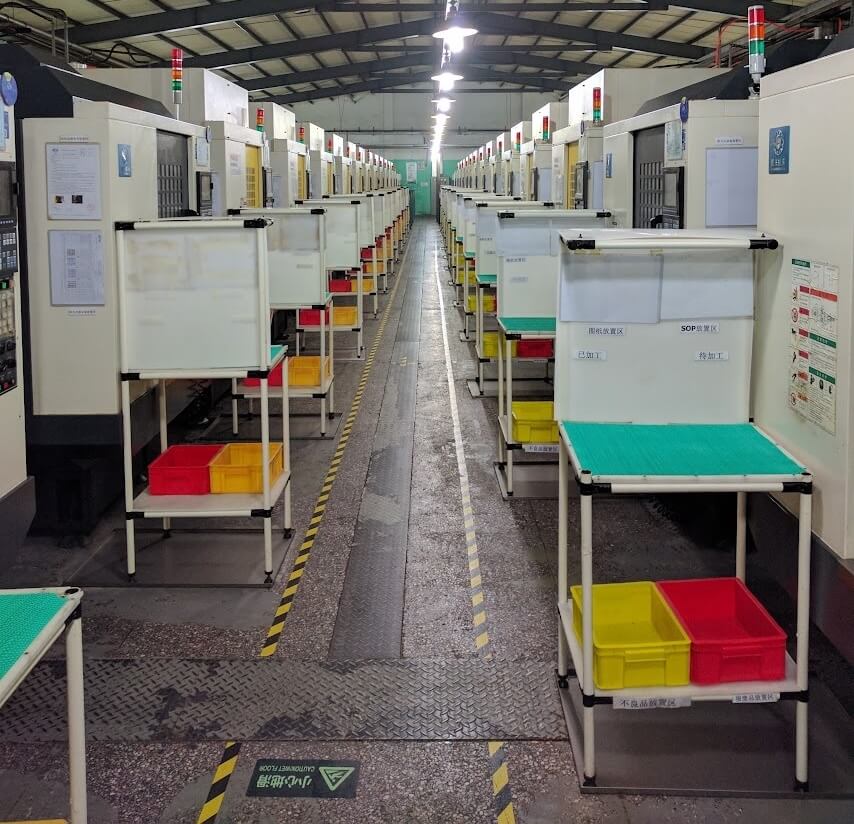Introducing the informal manufacturing methods database

Choosing the right manufacturing method and material for your prototype or final product can be an intimidating task. Depending on your application, a 3D print might be perfect for testing form studies but unacceptable to sell to the customer as a final product. An expensive CNC-machined prototype could be ideal for testing a complicated mechanism that will eventually be manufactured using injection molding. Learning how and when to use each method empowers you to make the right selection based on your timeline, quantity of units needed, application, and end goals.
We initially wanted to make a flowchart to help folks with selecting the best manufacturing method for their application, but it rapidly became too complicated because there are many overlapping methods that might be the right fit. So we decided a database with user-selectable filters would allow people to select variables based on their unique application and what’s important to them.
Introducing the informal MFG-DB, an easy way to help you select the best method based on your specific variables, including material, geometry, design confidence, appearance, speed, tooling/setup costs and part costs. Simply set your variables and the database will display which manufacturing method might work best for you. We currently include the 17 most commonly used methods and will continue to add others as we go.
We give an overview of the variables below. Give it a spin and let us know what you think!

Materials
The softer the material, the easier it is to manufacture, and the range of options is greater. This includes woods, plastics, and aluminum.
Glass is very hard to manufacture and can be CNC machined into shapes.
Plastics can be 3D printed, injection molded, laser cut, or machined easily.
Aluminum is a versatile metal as it can be machined, waterjet cut, or CNC machined fairly easily. Steel is harder.
Geometry
The size and shape of a part can influence the best methods of manufacturing. Parts that are flat or can be folded work well for laser cutting, die cutting, or waterjet cutting.
If a part has a continuous cross-sectional profile (think pasta shapes or 80-20 rails), then it might be a good fit for extrusion.
CNC machining could be a good fit for parts where the cutting tool can easily get to any areas that need to be removed from the material. Typically, 2.5 dimension shapes like topographic maps are good fits here, where the part varies in height but doesn’t have overhangs.
More complex geometry may require 3D printing, injection molding, or die casting.
Design Confidence
If you’re confident that your design won’t be changing after manufacturing, then it might make sense to invest in manufacturing methods with higher upfront tooling costs and lower part costs.
It’s hard to modify the design of these parts later on, and you typically incur an additional cost to change the tools.
If you’re not confident that your part is ready for mass manufacturing, it may make more sense to use a manufacturing method with lower or no tooling costs, but higher part costs.
Appearance
The manufacturing process can impact how a part looks and feels. Injection molding and urethane casting are very reliable and produce beautiful-looking parts that require no secondary processes, like painting.
Die cast or extruded parts may need to be blasted with an abrasive material and anodized to improve the appearance, which adds more costs.
Water jet or laser cut parts might have sharp corners or artifacts from the cutting process.
CNC machined or 3D printed parts could have artifacts from the manufacturing process, like layer lines or machine marks, which can be removed with a secondary process.
Speed
Certain manufacturing methods require significant time upfront to create the tooling used to actually produce the part. Injection molding and die casting could take a month or more to create tooling and may need iterations before they’re ready to mass produce.
Conversely, rapid prototyping methods like 3D printing and CNC machining can make parts in a matter of days (or hours!).
Tooling/Setup Costs
Many mass-manufacturing methods require an upfront cost to pay for the tooling, which is then used to produce the parts. The upfront costs may be very high, but then result in inexpensive part costs.
Some processes, like CNC machining, could require an operator to program the machine and come with a setup cost.
Rapid prototyping methods typically don’t incur a setup cost but have more expensive part costs.
Part Costs
Part costs are typically inversely proportional to tooling costs. If you pay for tooling, then the parts are generally fairly inexpensive. We talk more about this in our amortization post here.
Methods like CNC machining drop in price as you order more units. 3D printing may also follow this behavior, but only to a point, as there are labor costs included to post-process the printed items.
Reach out!
We hope you find this tool helpful! If there’s something we missed, reach out in the comments or on LinkedIn and let us know! If you’re stuck on which manufacturing method to choose, or need guidance, you can always reach out to an informal expert and see what our team of experienced freelancers recommends.
informal is a freelance collective for the most talented independent professionals in hardware and hardtech. Whether you’re looking for a single contractor, a full-time employee, or an entire team of professionals to work on everything from product development to go-to-market, informal has the perfect collection of people for the job.